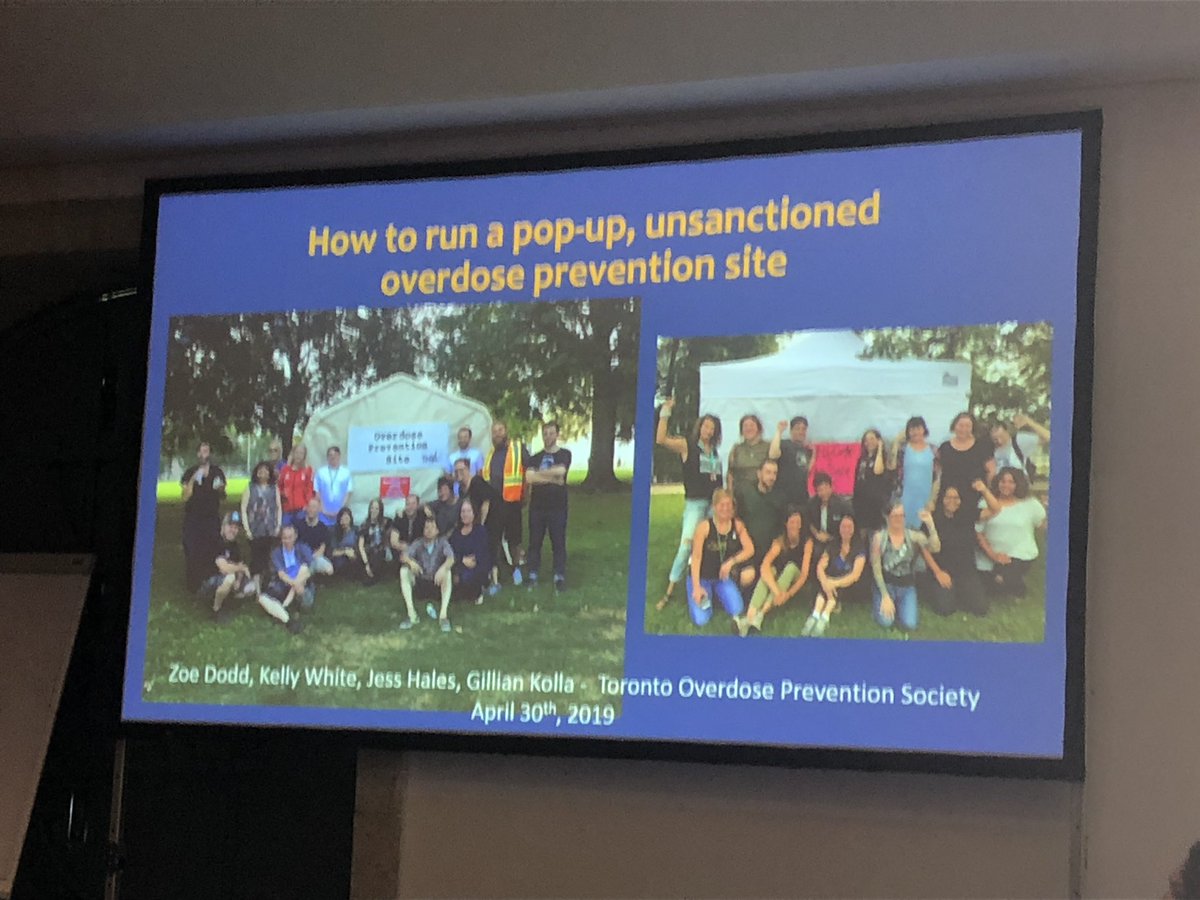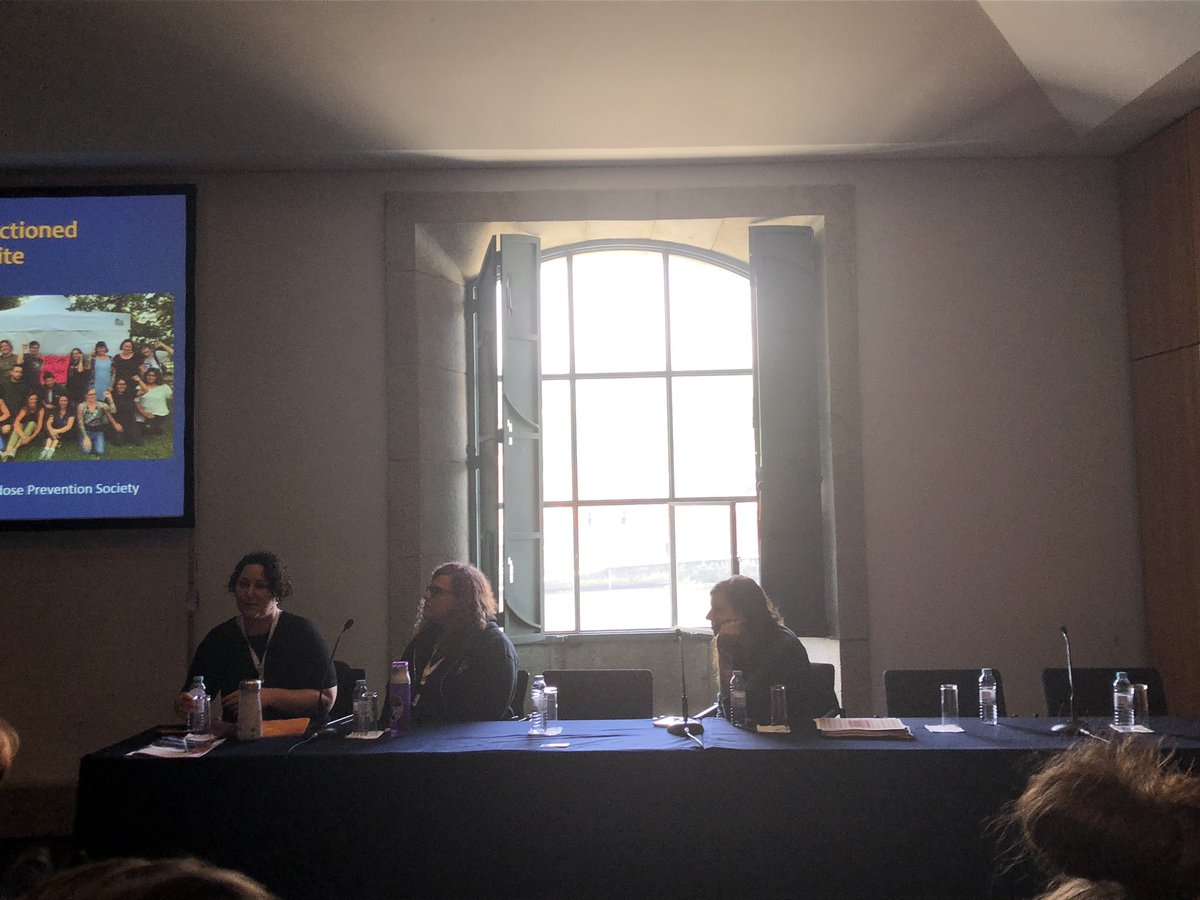
Happy to share our new paper in @CMAJ :
"Caring for people who inject drugs when they are admitted to hospital"
cmaj.ca/content/193/12…
It's #OpenAccess (so anyone can read it), but here's a 🧵anyway with the key points:
#MedTwitter #AddictionMedicine #HarmReduction
"Caring for people who inject drugs when they are admitted to hospital"
cmaj.ca/content/193/12…
It's #OpenAccess (so anyone can read it), but here's a 🧵anyway with the key points:
#MedTwitter #AddictionMedicine #HarmReduction
The number of people who inject drugs in 🇨🇦 is increasing, from 130,000 in 2011 to 171,900 in 2016
(as estimated by @BrendanJacka @SarahLarney @jasongrebely & team)
ajph.aphapublications.org/doi/full/10.21…
(as estimated by @BrendanJacka @SarahLarney @jasongrebely & team)
ajph.aphapublications.org/doi/full/10.21…
The rate of hospitalizations for severe injecting-related bacterial infections, like endocarditis, is increasing even faster
e.g. in Ontario:
journals.lww.com/cja/Abstract/2…
& in New Brunswick:
cjcopen.ca/article/S2589-…
e.g. in Ontario:
journals.lww.com/cja/Abstract/2…
& in New Brunswick:
cjcopen.ca/article/S2589-…
Reasons for ⬆️⬆️ infections aren't fully understood, but our social & policy choices towards people who use drugs are likely a major factor:
a) Criminalizing drugs creates toxic & unpredictable illicit drug supply (with unknown adulterants and changes in how often people inject)
a) Criminalizing drugs creates toxic & unpredictable illicit drug supply (with unknown adulterants and changes in how often people inject)
b) Incarceration, depriving housing & income, inequitable access to harm reduction - all limit peoples' ability to inject w/ safer techniques
c) Stigmatizing & pushing people away from healthcare until they're super sick & infections have already spread
crd.york.ac.uk/prospero/displ…
c) Stigmatizing & pushing people away from healthcare until they're super sick & infections have already spread
crd.york.ac.uk/prospero/displ…
In response to criminalization & stigma, in hospital we should try to provide nonjudgmental, culturally safe care: prioritize trust & relationships, recognize power imbalances, give patients space
see @BerniePauly
jmhan.org/index.php/JMHA…
& @pwidpride
sciencedirect.com/science/articl…
see @BerniePauly
jmhan.org/index.php/JMHA…
& @pwidpride
sciencedirect.com/science/articl…
Next, people admitted to hospital w/ medical complications of substance use disorders should be offered addiction treatment right there, on-the-spot
An RCT led by @liebschutz showed offering opioid agonist treatment in hospital improves outcomes
jamanetwork.com/journals/jamai…
An RCT led by @liebschutz showed offering opioid agonist treatment in hospital improves outcomes
jamanetwork.com/journals/jamai…
If your hospital doesn't already have staff with the right knowledge or skills, start an addiction medicine consultation service!
ncbi.nlm.nih.gov/pmc/articles/P…
Every hospital should be offering addiction treatment to hospitalized patients, which is now the basic standard-of-care
ncbi.nlm.nih.gov/pmc/articles/P…
Every hospital should be offering addiction treatment to hospitalized patients, which is now the basic standard-of-care
Of course most patients w/ endocarditis & other bacterial infections didn't come to hospital seeking addiction treatment, they came because they were septic.
Many patients do take up offers for addiction treatment, but if they don't that's okay too!
tandfonline.com/doi/full/10.10…
Many patients do take up offers for addiction treatment, but if they don't that's okay too!
tandfonline.com/doi/full/10.10…
(A reminder that people shouldn't lose their human rights or their right to health care just because they use drugs, even if they're not interested in addiction treatment today)
https://twitter.com/HRInews/status/1049267737439232000?s=20
People who use drugs report leaving hospital prematurely (before their antibiotics & other needed treatments are done) because of under-treated withdrawal, pain, and stigmatizing experiences of care
ncbi.nlm.nih.gov/pmc/articles/P… (@RS_McNeil)
tandfonline.com/doi/abs/10.108… (@DrSarahWakeman)
ncbi.nlm.nih.gov/pmc/articles/P… (@RS_McNeil)
tandfonline.com/doi/abs/10.108… (@DrSarahWakeman)
We can help patients stay & complete needed treatment by sufficiently treating pain & withdrawal
Opioid medications are far more effective at relieving opioid withdrawal than non-opioids
This includes methadone/buprenorphine, and/or short-acting opioids
crismprairies.ca/management-of-…
Opioid medications are far more effective at relieving opioid withdrawal than non-opioids
This includes methadone/buprenorphine, and/or short-acting opioids
crismprairies.ca/management-of-…
Finally, all hospitals should be offering harm reduction services (or partnering with expert community orgs) including peer-support, take-home naloxone, needle/syringe distribution, and supervised consumption services
All evidence-based to help prevent infections and save lives
All evidence-based to help prevent infections and save lives
Substance use is common in hospitals (especially if pain & withdrawal are untreated) and many hospitals either have no policy to tell staff how to respond, or "zero tolerance" approaches that create harm for patients - that needs to change
journals.plos.org/plosone/articl… (@talk2oleary)
journals.plos.org/plosone/articl… (@talk2oleary)
It's wild that most hospitals offer specialized, state-of-the-art antibiotics & surgical techniques for infections, and nothing for underlying withdrawal, pain, and addictions that caused the infections in the first place
jamanetwork.com/journals/jamai… (@serotavirus @DrMelissaWeimer)
jamanetwork.com/journals/jamai… (@serotavirus @DrMelissaWeimer)
For folks interested in learning more, I point you to this excellent and comprehensive guideline from @CrismCan
"Management of Substance Use in Acute Care Settings"
crismprairies.ca/wp-content/upl…
(by @DrKLMeador @kathryndong @ehyshka @HMorrisedmonton @ginettafammed & team!)
"Management of Substance Use in Acute Care Settings"
crismprairies.ca/wp-content/upl…
(by @DrKLMeador @kathryndong @ehyshka @HMorrisedmonton @ginettafammed & team!)
Finally, as a trainee it was a privilege to write this with two of my dearest clinical mentors & role models - but I now understand that this paper is a 💯% whopper of a #manel
It's not a random coincidence that I'm a white man mentored by white men
It's not a random coincidence that I'm a white man mentored by white men
Continuing to work towards teams that do better science by incorporating more perspectives, experiences, & skill sets different from my own
& starting to work towards breaking outside the patriarchal system of academic medicine from which I benefit
& starting to work towards breaking outside the patriarchal system of academic medicine from which I benefit
• • •
Missing some Tweet in this thread? You can try to
force a refresh











